Affiliate disclosure: This post may contain affiliate links. Please see our Privacy Policy.
Fermented hot sauce enhances the flavor of fresh peppers, creating an unforgettable homemade hot sauce that’s infinitely better than the plain (unfermented) version. With a simple lacto-ferment, you can create incredible flavor with very simple ingredients.
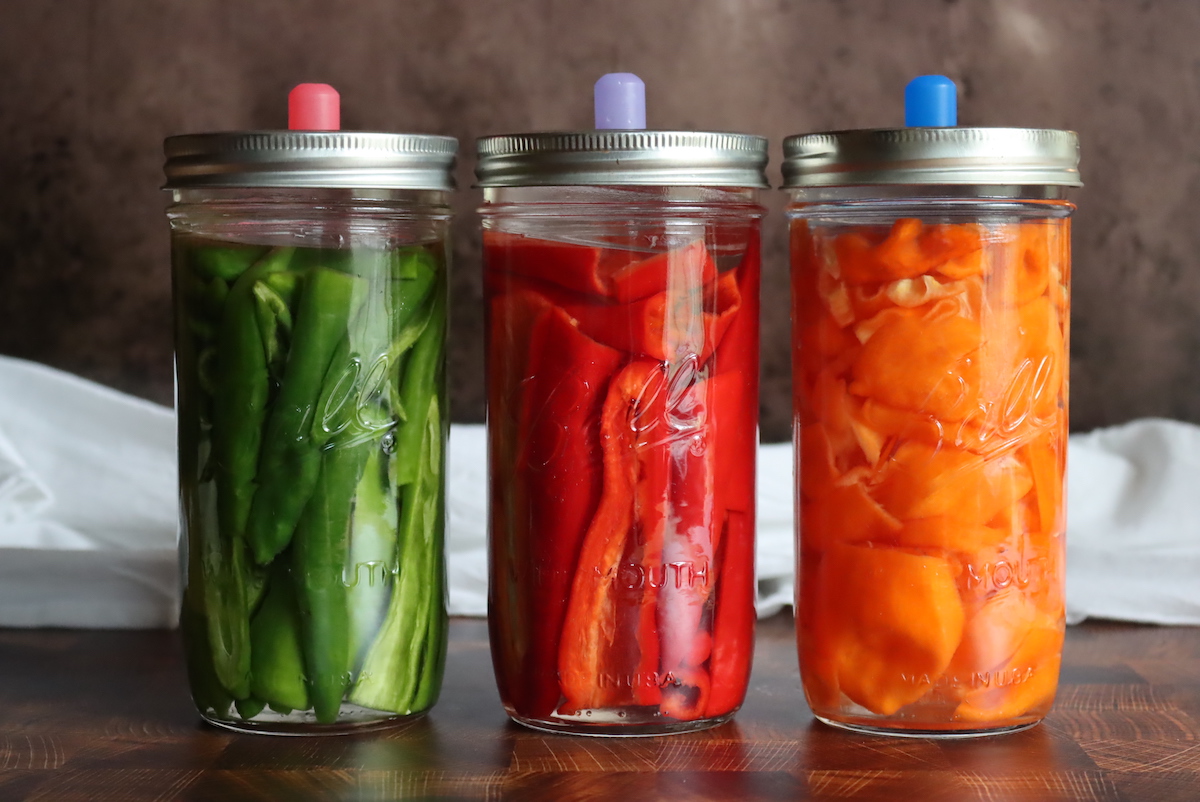
The absolute best hot sauces in the world are fermented hot sauces, and their flavor is absolutely transcendent.
“Regular” hot sauce is a simple blend of chillis, salt, and vinegar, which turns out exactly how you’d expect. It’s spicy, from the peppers, of course, with a harsh acidity from the vinegar and lots of salt for preservation.
Hot peppers are generally pretty uni-dimensional flavor-wise…at least until their fermented. When you make fermented hot sauce, you unlock a whole plethora of volatile flavor compounds, from fruity esters and floral notes, to complex umami notes that will make your taste buds sing.
This past year, we grew more than a dozen species of hot pepper so we could try out hand at making our own fermented hot sauce, and the results were amazing. Our favorite by far is a mango habanero, which really comes to life as a fermented hot sauce.
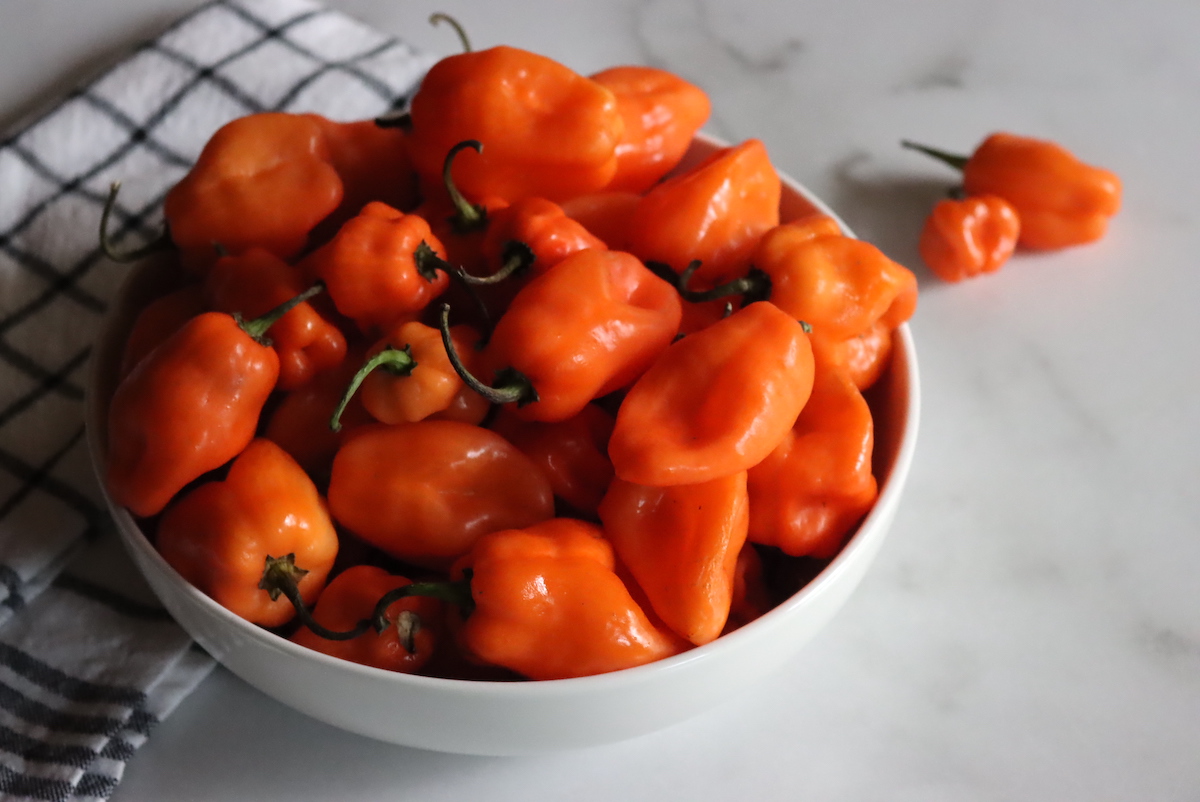
What is Fermented Hot Sauce?
Fermented hot sauce is a simple way to make amazing hot sauce at home by fermenting chillis in a jar or crock. The fermentation process adds incredible depth of flavor and brings out nuanced fruity and floral notes you didn’t know were possible from simple ingredients.
It’s a lacto-ferment, so it’s similar to homemade sauerkraut and yogurt, but while the process is similar, the results are incredible, and chili peppers transform completely in the process.
Fermented hot sauce recipes contain similar, if not identical, ingredients (peppers, salt, and vinegar) as regular hot sauce, but the extra step of fermentation gives the resulting sauce an unmistakable tangy and sweet depth of flavor. I’m continually amazed at how much complexity is revealed after peppers have been given the opportunity to ferment for a couple of weeks.
Fermented hot sauce, along with many other types of condiments, is more common than you might realize: Tobasco, Sriracha, and gochang sauce are all popular examples that make use of fermented peppers.
One of my favorite books about hot sauce and fermentation is by Kirsten K. Shockey, it’s called Fiery Ferments, and it contains dozens of examples of traditional fermented hot sauces from around the world. It also walks you through the process of making simple fermented hot sauces, as we’re going to do here.
Ingredients for Fermented Hot Sauce
The ingredient list for fermented hot sauce is short, the only must-have items being peppers and salt. Depending on the recipe, you might want to add additional ingredients such as carrots, garlic, salt, fruit, and/or vinegar.
Peppers
The peppers I choose for making hot sauce are based on the heat level I want, as well as the flavor profile I’m going for. This is by no means an exhaustive list, but these are some of the peppers I like to use when I make a fermented hot sauce:
- Poblano: not-too-spicy with a green pepper/vegetal flavor; poblano peppers are a great way to temper the heat of spicier peppers in hot sauce.
- Jalapeño: the heat level of these popular peppers varies from pepper to pepper; you have the option of choosing ripe (red) peppers or unripe (green) peppers.
- Serrano: these pepper have a medium heat level and earthy vegetal flavor.
- Chipotle: are dried ripe jalapeño peppers. Chipotle peppers have a distinct smoky flavor and tend to have low or medium heat levels.
- Cayenne: a medium-hot pepper with mild fruit flavor.
- Tobasco: the star ingredient in the famous hot sauce, this fruity pepper has a mild smoky component.
- Habanero: this super-spicy pepper is my favorite choice whenever I’m making hot sauce! With strong notes of tropical fruit and citrus, habaneros add impressive amounts of heat to any batch hot sauce, even when used sparingly. Still, it’s not the heat I love, but rather their complex, fruity flavor, which is enhanced by fermentation.
Salt
When it comes to making fermented hot sauce, use any salt you prefer or have on hand. I use sea salt when I make brine, but you can use kosher, Himalayan pink, or pickling salt — just avoid table salt, which contains iodine and anti-caking agents, both of which can adversely affect the fermentation process.
Carrots, Garlic & Onion
Carrots, garlic, and onion can make a great base for hot sauce while adding subtle flavor, but these vegetables also play important roles when it comes to fermentation.
Carrots have an alkaline base, which means they balance some of the acidity that comes from adding vinegar to the sauce.
Onions are a source of sugar, which helps fermentation, and garlic is rich in surface lactic acid bacteria.
They all add flavor but also help bulk out the hot sauce to increase your yield and help keep the heat level manageable at the same time.
Fruit
Pretty much any kind of fruit can be added to hot sauce, including peaches, nectarines, berries, and most types of tropical fruit.
Depending on your preferences, you can ferment the fruit directly in with the peppers or you can purée the fruit and add it to the blended hot sauce.
The latter method is preferred if you want to avoid a hot sauce without alcohol, as any fruit added at the beginning of the fermentation process will ferment in an alcoholic way.
For an in-depth look at how fruit can be added to a fermented sauce, check out this Serious Eats recipe for Double Berry Habanero Hot Sauce.
Vinegar
Adding vinegar to fermented hot sauce makes it extra zippy, and you can add as much or as little (or none) as you’d like. Use white vinegar, as it’s the most neutral-tasting of all vinegars.
I tend to use cider vinegar, as it compliments most of the other flavors in the sauce. It also tends to have a more balanced flavor, and less “harsh” notes than plain white vinegar.
Equipment for Fermented Hot Sauce
While technically, there’s no need for special equipment when making fermented hot sauce, there are a few pieces that make the process more efficient while taking out some of the guesswork (particularly helpful if you’re new to home fermenting).
Airlock Lid
Airlocks keep the atmosphere in the fermenting vessel anaerobic, which means it prevents air from getting into the vessel while letting the carbon dioxide from the fermentation process escape so that you don’t have to worry about pressure building up.
Cultures for Health has a nice half-gallon set with the jar, lid, water lock, and fermentation weight included.
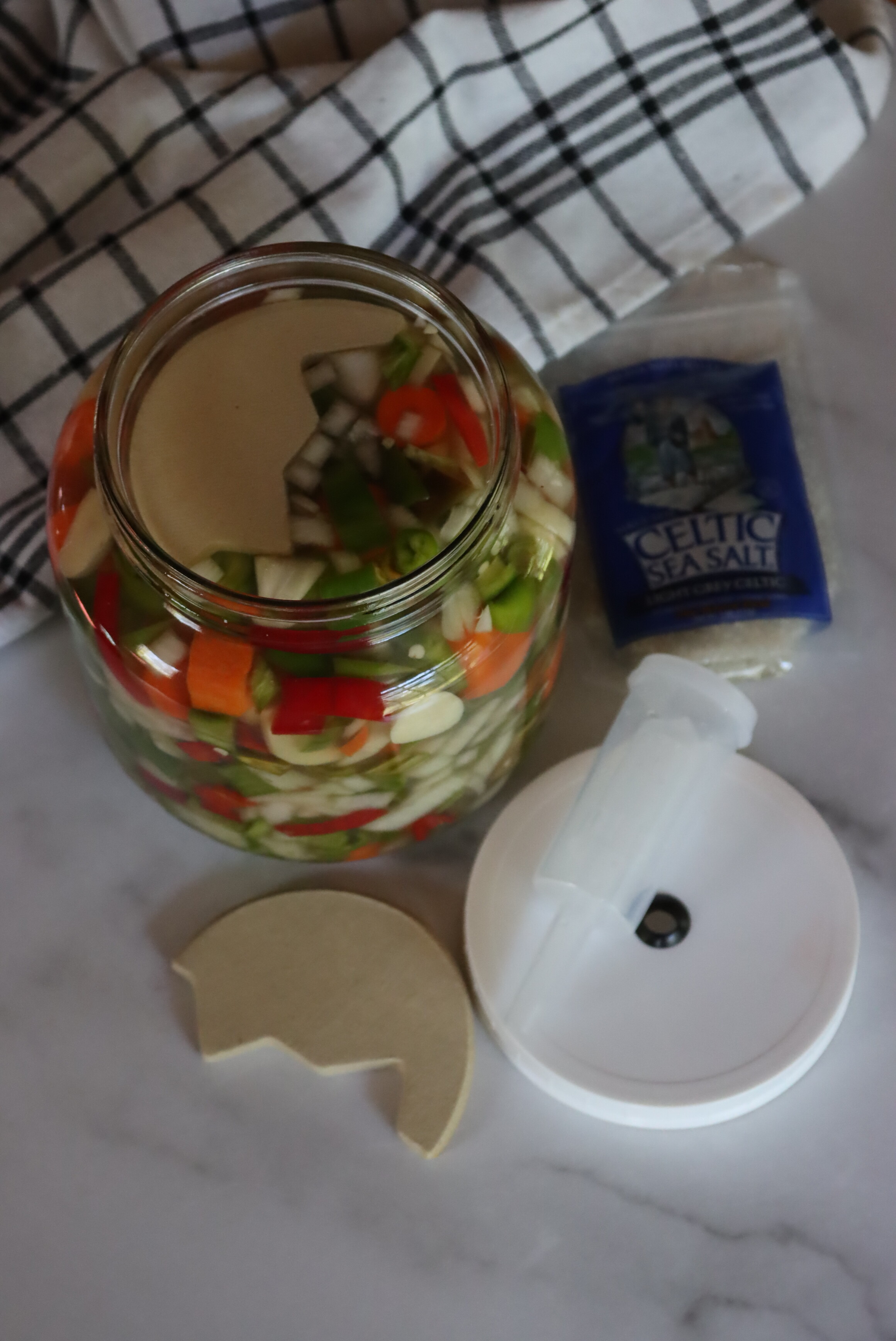
I’ve also used silicone water locks from mason tops, and they’ll fit on any wide-mouth mason jar.
Pickle pipes are made of food-grade silicone, which self-seals to create an airlock on any jar. Pickle pipes not only maintain an anaerobic environment in the fermentation vessel, they’re easy to clean and prevent funky fermentation smells from taking over your kitchen.
Either way, an airlock (or one-way valve) lid helps keep things clean and prevents contamination from getting into your ferment, while still allowing CO2 to escape from the container during active fermentation.
Fermentation weights
Usually made of glass or ceramic, fermentation weights keep the solid contents of the jar completely submerged under the brine.
Anything that floats above the liquid level is likely to mold, so these help prevent spoilage.
In a pinch, some people will use a cabbage leaf at the top to hold everything down, and then weigh it down with something like a clean/sterilized rock, so everything stays under the liquid level. That works, but an easy-to-clean glass or ceramic weight makes the process a lot simpler.
I’m using both glass fermentation weights from mason tops, as well as a ceramic weight that came with the half-gallon set from Cultures for Health.
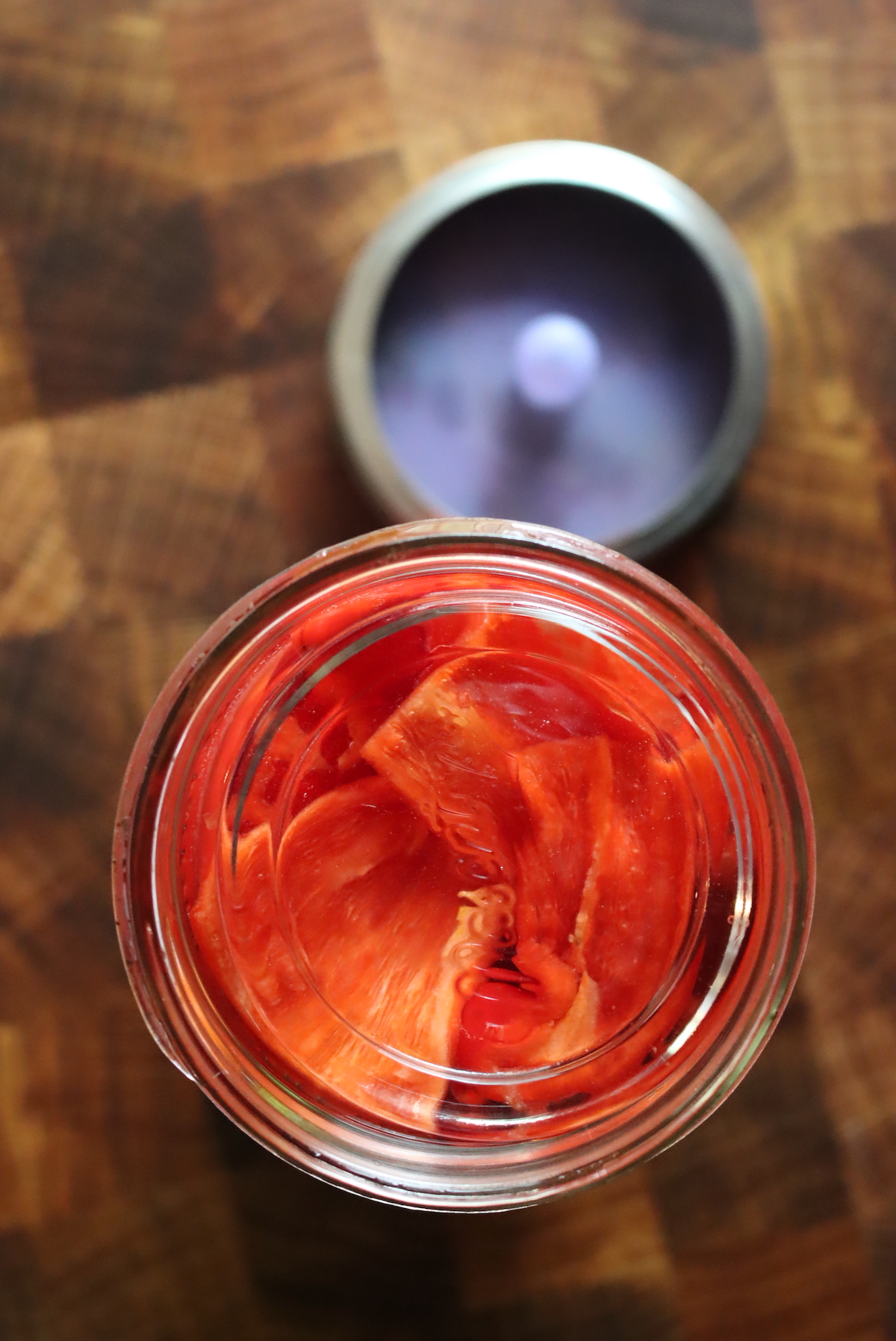
Beyond these fermentation-specific pieces of equipment, there’s not much else you’ll need to make this homemade hot sauce besides these everyday items:
- Chef’s knife (for chopping peppers and any other add-ins)
- Large measuring cup and fork or whisk (for making brine)
- Fine mesh sieve (optional but recommended for straining the puréed hot sauce)
- Spatula
- Food processor or blender
- Extra jars and bottles for storage
How to Make Fermented Hot Sauce
To make fermented hot sauce, begin with a generous 2 pounds of fresh peppers (you can also add dried peppers instead of fresh). Two pounds will fill a half-gallon jar, so adjust the quantity depending on your desired yield.
Wearing gloves, remove the green tops and stems from the peppers as well as the seeds and white flesh. Slice the carrots and onions thinly if using, leave the garlic cloves whole (but peel them). When I include garlic in my hot sauce recipe, I like to add 4 to 6 cloves for full garlicky effect.
Pack the peppers and optional add-ins into a half-gallon jar, leaving 1 inch of headspace at the top — you can always add more peppers to fill the jar if needed. Sprinkle the whole garlic cloves on top.
In a large measuring cup or medium-sized bowl, whisk 3 tablespoons of salt into 1 quart of lukewarm water until dissolved. Pour the brine over the chopped vegetables and place a fermentation weight on top to keep the ingredients submerged under the liquid.
One quart of brine is usually just about right for a half-gallon jar, as the peppers and solids take up about half the volume even when packed pretty tightly.
For best results, use an airlock or pickle pipe fitted over the jar to help ensure successful fermentation.
While some practiced fermented are comfortable with open fermentation, I find these safeguards are reassuring to have in place. Throwing out ingredients because a ferment didn’t go as planned is always disappointing!
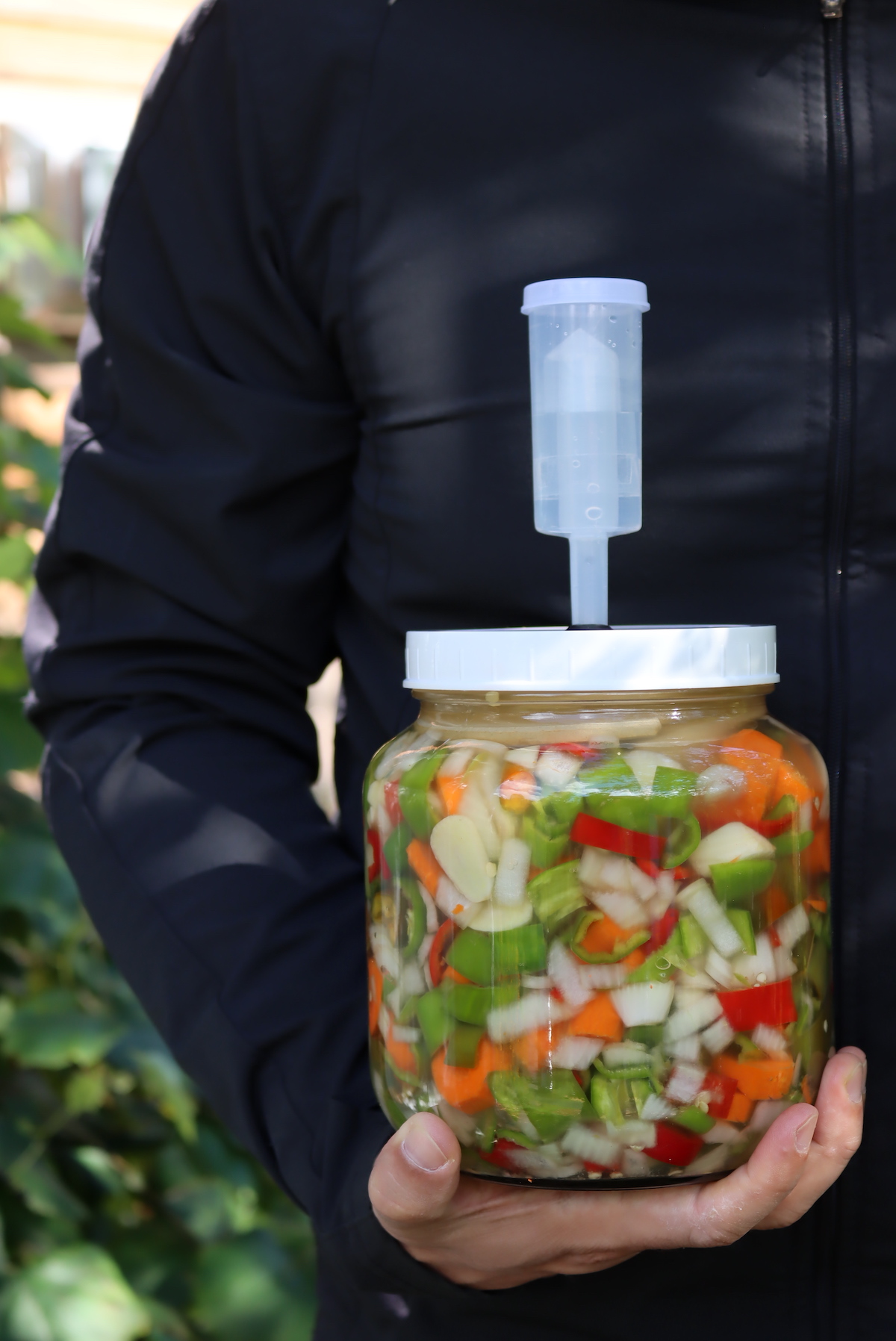
Another time-saving benefit to using an airlock or pickle pipe? There’s no need to babysit the ferment, which means you don’t have to worry about burping the jars — the built-in mechanism does all the work for you!
Start tasting the peppers after 1 week of fermentation, the peppers should have an appealing aroma and flavor (if there’s a fishy funk, something went wrong).
Keep tasting every day or two after this point until you’re satisfied with the peppers, this could take another week or two depending on your taste as well as the ambient temperature surrounding the fermentation jar (cooler temperatures mean slower ferment times).
Once the peppers are to your liking, strain out the liquid and reserve — you’re going to be adding at least some of this salty but flavorful liquid back into the purée. Transfer all of the peppers and add-ins to a blender or food processor and add 1 cup of brine, white vinegar, or a combination of the two liquids back in with the fermented vegetables.
Purée all the ingredients until smooth, adding in more brine or vinegar until the sauce reaches the desired thinness. Be very careful not to stand too close to the blender or food processor when you remove the lid, when your eyes and/or lungs are exposed to that cloud of heat it can be overwhelming and painful; it’s always a good idea to work mindfully when handling spicy ingredients of any kind.
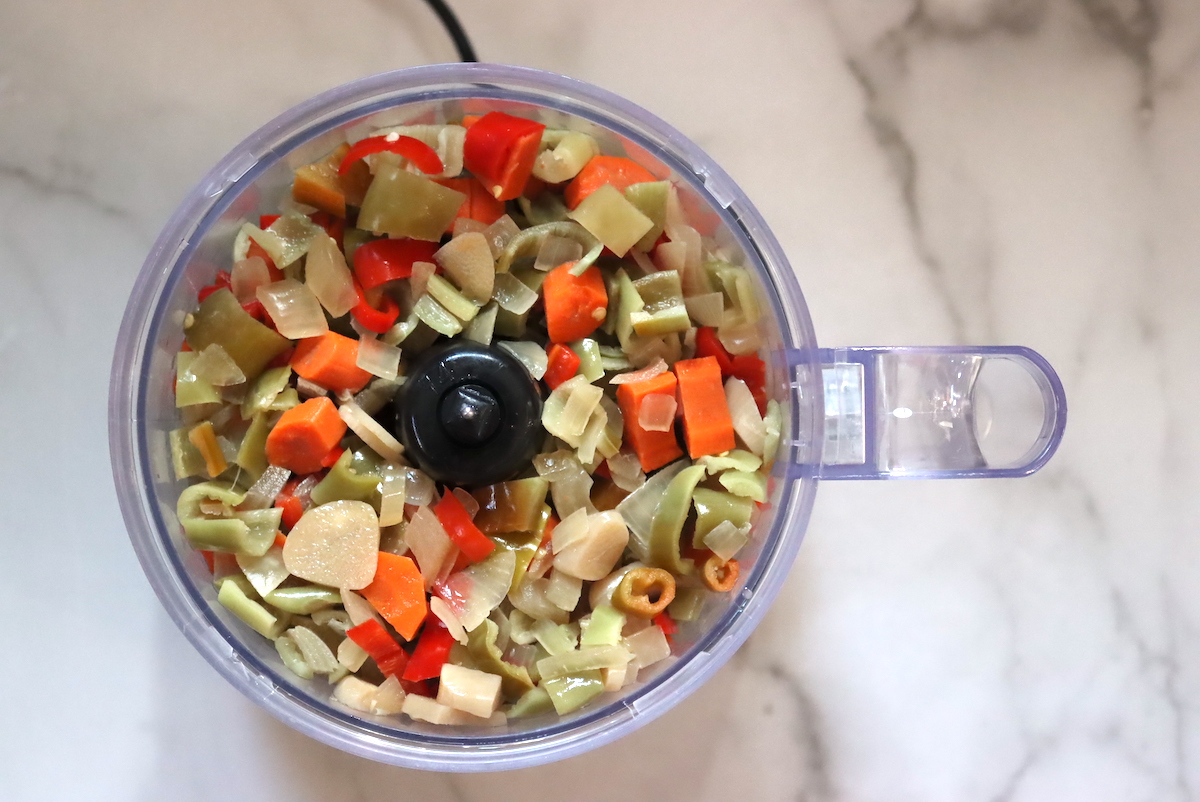
Next, pass the blended sauce through a fine mesh sieve.
This step isn’t absolutely necessary, but I think it gives the finished hot sauce a much nicer texture and finish. It only takes a couple of minutes, but the results are worth it, in my opinion.
To reduce the risk of capsaicin transfer to the eyes or any other body parts, wear gloves and work carefully when pressing the hot sauce through the sieve (eye protection’s not a bad idea either).
I like to use a spatula or the back of a spoon to push the chunky sauce through.
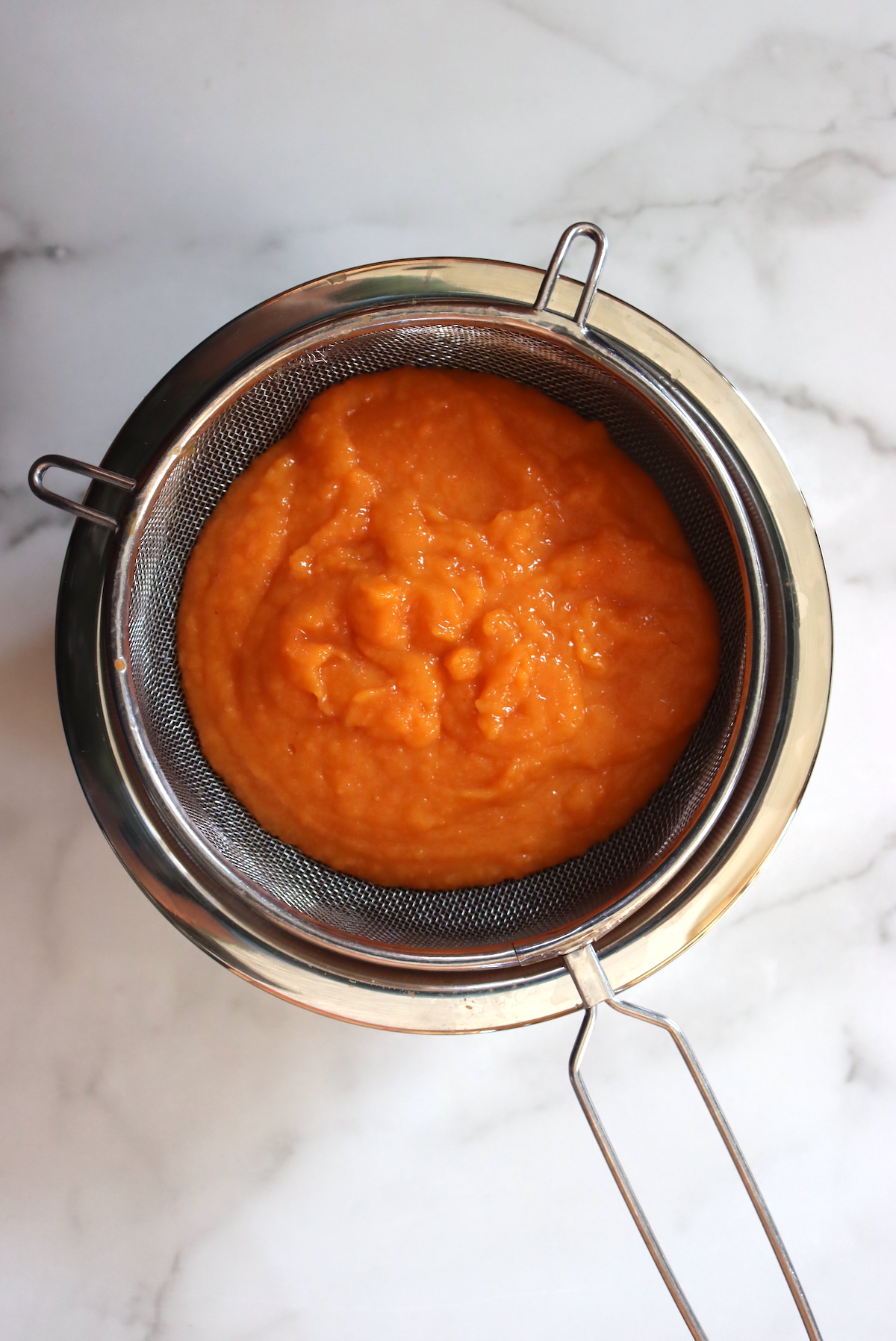
You can always freeze the leftover pepper pulp in ice cube trays, they make a tangy addition to chili, taco sauce, or tomato sauce. (Be aware that once you use an ice cube tray for leftover pepper pulp, though, you’ll have spicy ice from here on out, so use one you dedicate to freezing food ingredients rather than one you hope to use again for ice.)
Transfer the sauce to squeeze bottles or small jars and store in the fridge for up to 1 year. Because the hot sauce will continue to slowly ferment in the cold, I always leave the lids slightly loose to let the resulting gas escape.
Fermented Hot Sauce Recipes
If you’re truly interested in making fermented hot sauce at home, I’d highly recommend the books Fiery Ferments by Kristen Shockey and The Fermented Hot Sauce Cookbook by Kristin Wood. Both have dozens of specific recipes for making fermented hot sauce at home.
Beyond that, if you’re looking for specific fermented hot sauce recipes, here are a few to get you started.
- Spicy Serrano Fermented Hot Sauce
- Fermented Pineapple Habanero Hot Sauce
- Fermented Citrus Hot Sauce
- Chipotle Fermented Hot Sauce with Garlic and Cumin
In truth, you don’t actually need a “recipe” to get the job done. Every hot sauce is unique, and knowing the process is what counts. That’ll let you make a fermented hot sauce that’s exactly to your tastes.
Fermented Hot Sauce FAQs
Here I’ve compiled answers to some of the most popular FAQs I could find:
We tend to seed the peppers before fermenting hot sauce, but it’s not strictly necessary.
Fiery Ferments has some advice here:
“For most sauces, it’s all right to ferment the mash without removing the pepper seeds, which add a little more heat (and some chewiness). After fermentation, they will get strained out along with the tough skins for a smooth mouthfeel in your final product…
On the other hand, if you’re making a sweet pepper mash or using very thin-skinned peppers that won’t require straining (Fresno or habanero, for example), removing the seeds from the fresh peppers is worth the effort.”
She also recommends saving the strained seeds and skins, and dehydrating them for 8-12 hours at 105 degrees. Then blend in a spice grinder to make a really intense pepper powder that will kick up any dish.
Knowing the exact best location to store a fermentation vessel is something that will come to you effortlessly when you become more familiar with the process and how it fits into the microclimate that is your kitchen. In general, the best temperature range is somewhere between 65°F and 72°F. If the temperature is significantly higher or lower than this range, fermentation will take longer.
Another factor to consider is humidity. This is where airlocks and pickle pipes come in extra-handy, as create an anaerobic environment that makes it difficult for mold and other unwanted bacteria to grow.
If you notice a layer of white growth floating on top of your ferment, there’s no need to panic! Nine times out of ten, this white growth is a harmless type of yeast called kahm yeast — let it grow undisturbed during the ferment and then remove by scooping it from the surface before blending the peppers.
If you do have peppers floating above the level of the brine, they can mold, and in that case, it’s not kahm yeast; it’s contamination that can be removed if you catch it quickly and get everything back below the liquid line. If it’s more than just a tiny spot though, it’s time to toss the ferment.
Cloudiness is a sign of healthy lacto acid fermentation — in other words, there’s nothing to worry about! Cloudiness usually goes away on its own, or it sinks to the bottom of the jar as the peppers continue to ferment.
Lacto-Fermentation Recipes
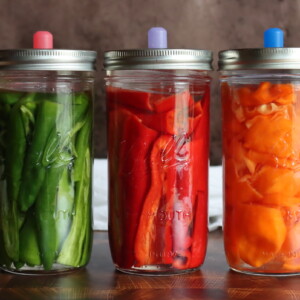
Fermented Hot Sauce
Ingredients
- 1 quart water
- 3 Tbsp. sea salt
- 2 lbs. chili peppers
- 4 to 6 cloves garlic
- OPTIONAL: carrots, onion, garlic, herbs, white vinegar
Instructions
- Wash chili peppers and remove tops. Using a sharp knife, chop the peppers into pieces roughly 1-inch in length. If including carrots and onion, cut them into similar-sized pieces and keep separate from the peppers.
- Add chopper peppers to the half-gallon jar, packing them tightly to fill the jar. Add carrots and onion if using; place garlic cloves on top of chopped vegetables. Leave 1-inch headspace at the top.
- Mix together lukewarm water and salt, stirring until the salt has dissolved completely. Pour brine over the pepper mixture.
- Place fermentation weights in the brine and on top of vegetables — they should be completely submerged.
- Cover and seal the jar with an airlock lid.*
- Give the chili peppers 1 to 2 weeks to ferment.
- When the peppers are ready, carefully strain the fermented peppers and add-ins from the brine. Reserve brine.
- Transfer fermented ingredients to a food processor or blender. Add 1 cup of brine to the mixture before processing until smooth. Add more brine or white vinegar as needed.
- OPTIONAL: Strain hot sauce through a fine mesh sieve for a smooth texture (skip this step if you prefer a chunkier sauce).
- Decant hot sauce into clean jars or bottles. Store in the fridge for up to 1 year.
Notes
Fermentation Recipes
Don’t stop at fermented hot sauce! Keep your kitchen bubbling with these easy home ferments…
- Fermented Garlic Honey
- Homemade Water Kefir
- Mesophilic Yogurt: Making Yogurt at Room Temperature
- Fermented Turmeric (Natural Anti-Inflammatory)
- Homemade Drinkable Yogurt (Swedish Filmjölk)
- Lacto-Fermented Pickles
- How to Make Sauerkraut
- How to Make Apple Cider Vinegar

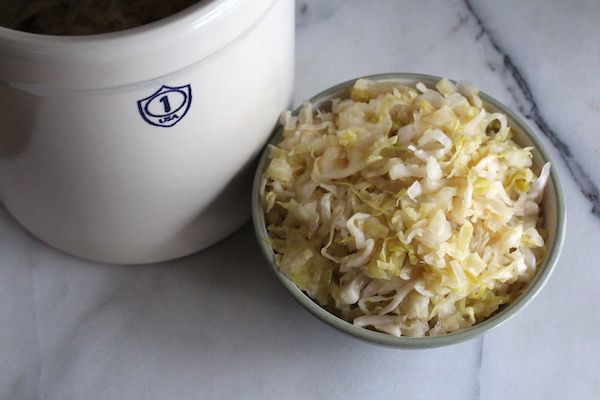

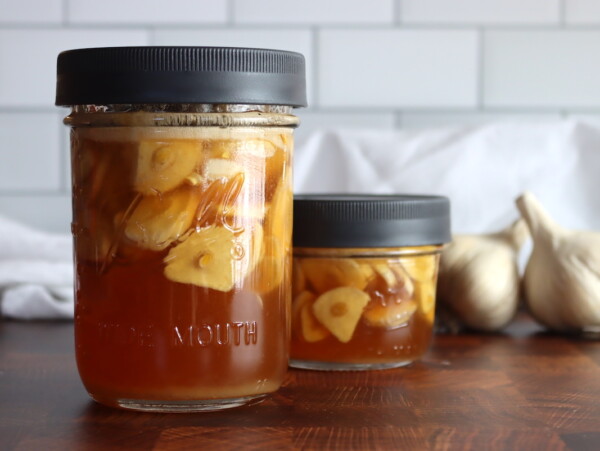
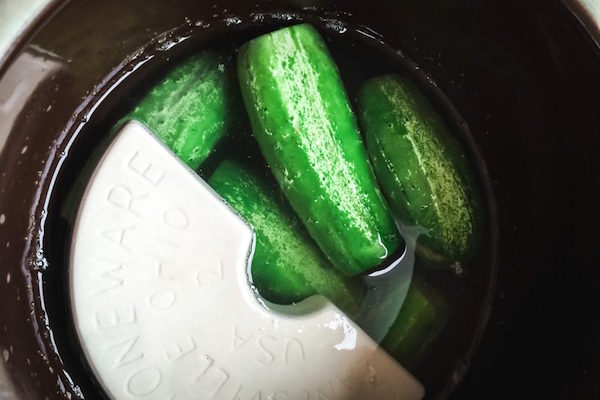
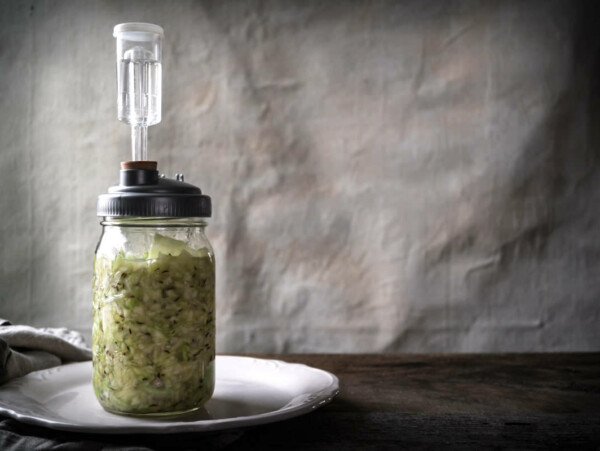
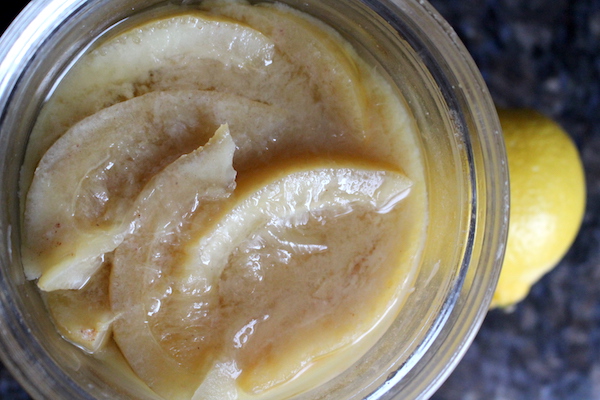










My husband absolutely loves this one. Fermenting hot sauce gives it so much more flavor than standard vinegar hot sauces.
Hi,can you add vegetables after fermentation? Will this affect the self life,?
The mixture will actually continue to ferment in the fridge, just more slowly. Can you share what your purpose is behind wanting to add vegetables after fermentation?
I have peppers I have froze , as was picking throughout,,
Can I use frozen dried and fresh together
Ty
I have never tried that before. Let us know how it goes.
I’m about to harvest a lot of ghost peppers, and intend to make a fermented sauce with some additional habanero peppers, onions, carrots, and garlic. My first question, which you have answered, is whether or not to include the onions, carrots, and garlic in the ferment, which you do (but do the carrots really get soft enough to puree during the fermentation process?). However, I intend to make a pepper mash before fermentation, rather than leaving them whole. So my next question(s) is this: do I include the additional vegetables with the mash when I ferment? Or do I grind them up and include them? Or do I ferment them whole in a separate jar?
You can do any of those actually. What’d I’d do? I’d just grind everything together in a high powered blender and make a smooth mash of everything together. Make sure you put a brine over the top of the mash, as anything above the liquid line will spoil. Actually looking up recipes for traditionally fermented harissa as a paste will give you similar instructions, though I think they often top with olive oil to seal rather than brine (which also works, so that none of the veg are exposed to air and can mold). Best of luck!